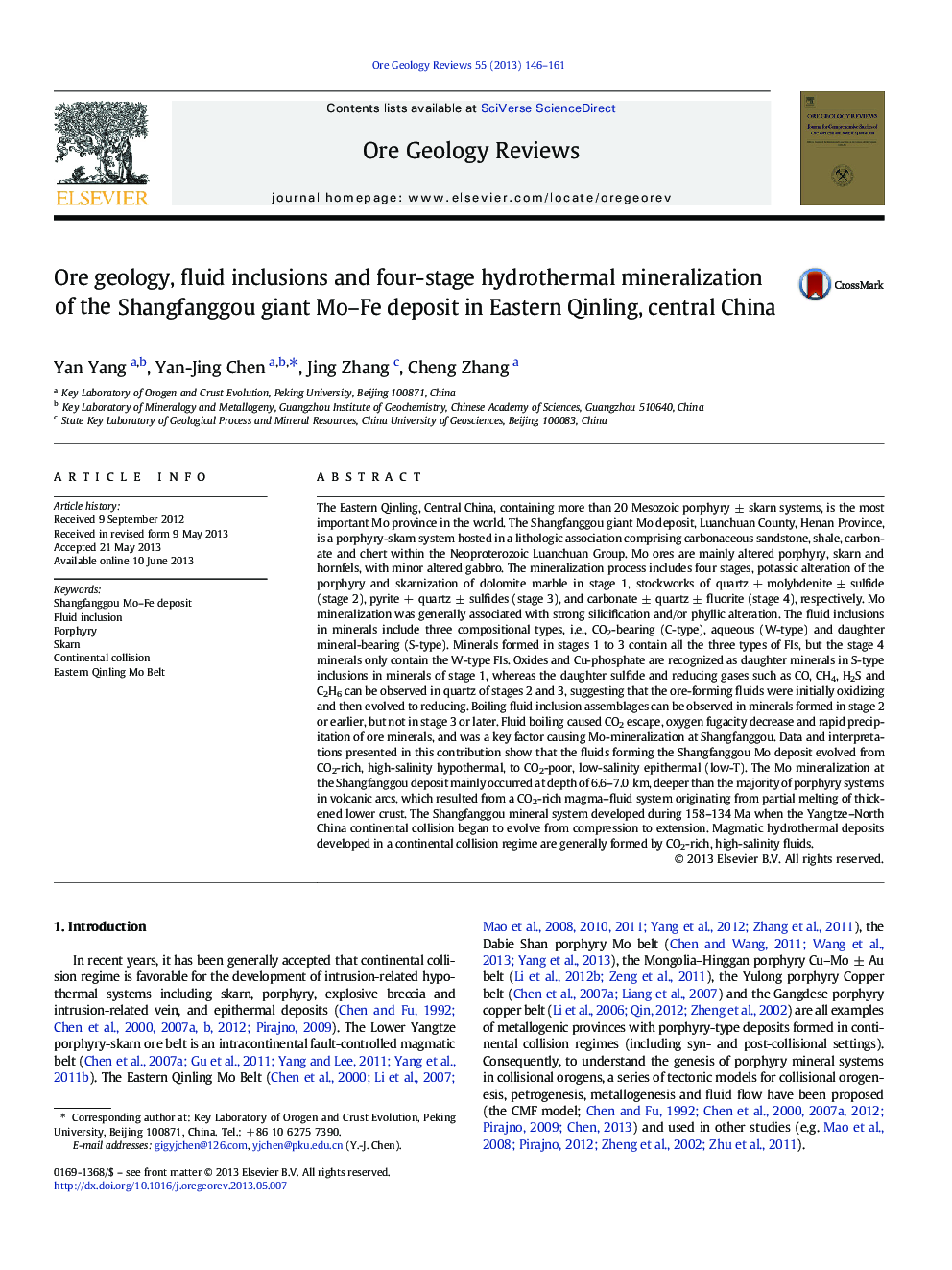| کد مقاله | کد نشریه | سال انتشار | مقاله انگلیسی | نسخه تمام متن |
|---|---|---|---|---|
| 4697412 | 1637248 | 2013 | 16 صفحه PDF | دانلود رایگان |

• Shangfanggou porphyry-skarn Mo-Fe system developed in a post-collision setting.
• The deposit contains CO2-bearing, solid-bearing and aqueous fluid inclusions.
• Four-stage mineralization resulted from magmatic→boiling→mixing→meteoric fluids.
• The ore-fluids gradually evolved from saline and CO2-rich to dilute and CO2-poor.
• The ores were formed at depth of 6.6–7.8 km, deeper than porphyry systems in arcs.
The Eastern Qinling, Central China, containing more than 20 Mesozoic porphyry ± skarn systems, is the most important Mo province in the world. The Shangfanggou giant Mo deposit, Luanchuan County, Henan Province, is a porphyry-skarn system hosted in a lithologic association comprising carbonaceous sandstone, shale, carbonate and chert within the Neoproterozoic Luanchuan Group. Mo ores are mainly altered porphyry, skarn and hornfels, with minor altered gabbro. The mineralization process includes four stages, potassic alteration of the porphyry and skarnization of dolomite marble in stage 1, stockworks of quartz + molybdenite ± sulfide (stage 2), pyrite + quartz ± sulfides (stage 3), and carbonate ± quartz ± fluorite (stage 4), respectively. Mo mineralization was generally associated with strong silicification and/or phyllic alteration. The fluid inclusions in minerals include three compositional types, i.e., CO2-bearing (C-type), aqueous (W-type) and daughter mineral-bearing (S-type). Minerals formed in stages 1 to 3 contain all the three types of FIs, but the stage 4 minerals only contain the W-type FIs. Oxides and Cu-phosphate are recognized as daughter minerals in S-type inclusions in minerals of stage 1, whereas the daughter sulfide and reducing gases such as CO, CH4, H2S and C2H6 can be observed in quartz of stages 2 and 3, suggesting that the ore-forming fluids were initially oxidizing and then evolved to reducing. Boiling fluid inclusion assemblages can be observed in minerals formed in stage 2 or earlier, but not in stage 3 or later. Fluid boiling caused CO2 escape, oxygen fugacity decrease and rapid precipitation of ore minerals, and was a key factor causing Mo-mineralization at Shangfanggou. Data and interpretations presented in this contribution show that the fluids forming the Shangfanggou Mo deposit evolved from CO2-rich, high-salinity hypothermal, to CO2-poor, low-salinity epithermal (low-T). The Mo mineralization at the Shangfanggou deposit mainly occurred at depth of 6.6–7.0 km, deeper than the majority of porphyry systems in volcanic arcs, which resulted from a CO2-rich magma–fluid system originating from partial melting of thickened lower crust. The Shangfanggou mineral system developed during 158–134 Ma when the Yangtze–North China continental collision began to evolve from compression to extension. Magmatic hydrothermal deposits developed in a continental collision regime are generally formed by CO2-rich, high-salinity fluids.
Journal: Ore Geology Reviews - Volume 55, November 2013, Pages 146–161